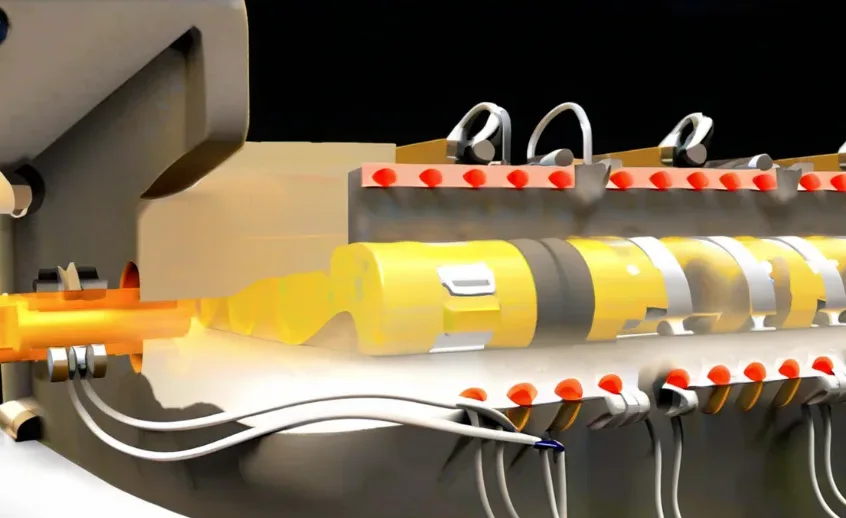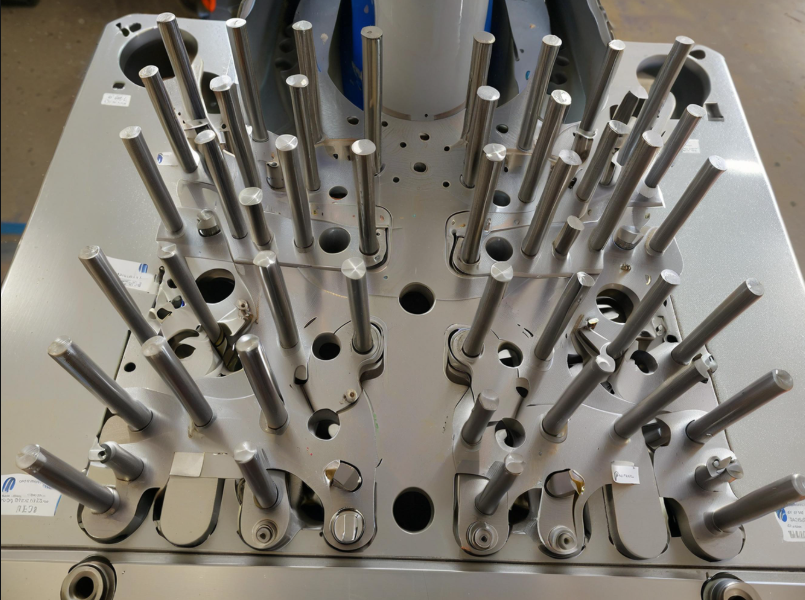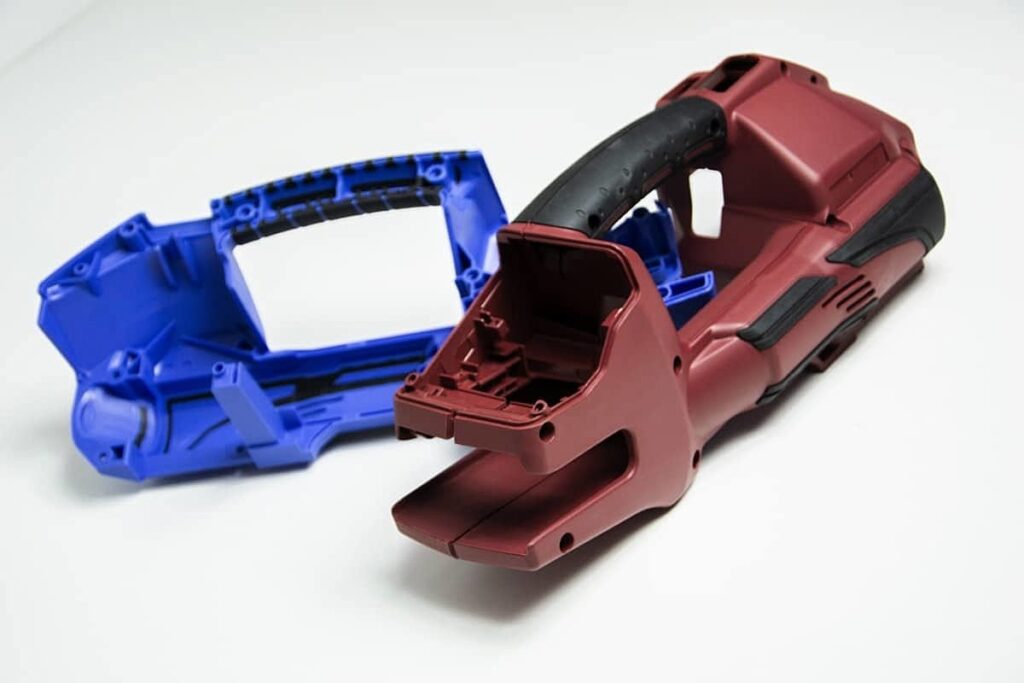There are many types of pressure involved when making injection-molded plastic parts. We’ve explained the importance of clamping pressure, so now let’s look at injection, holding, and back pressure. It’s important for a product developer to understand how these forces work together and ultimately how balancing these forces affects part quality, pieces per hour, and product cost.
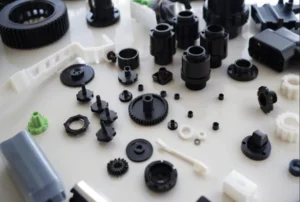
What is Injection Pressure?
Injection pressure is the force applied by the reciprocating screw to push molten plastic resin into an injection-molded mold cavity, up to about 95% of capacity. It’s balanced against the clamping pressure of the machine and is calculated based on the size and shape of the part, as well as the size of the gate opening.
Why Is Back Pressure Necessary?
Back pressure is necessary to allow extra time for the heavy flutes on the reciprocating screw to mix the next shot of resin.
The flutes’ cutting action heats the resin and maintains consistent density from one shot to the next. They also help thoroughly mix any masterbatch coloring pigments in the resin.
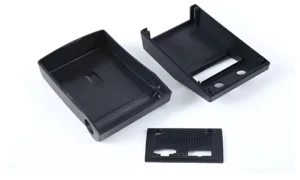
As with the other parameters, the process technician must control this pressure so that the resin isn’t overmixed, which can degrade it due to excessive steering.
What is Holding Pressure?
Holding, or packing, pressure is necessary to fill the last 5% of a mold tool cavity. This pressure is decreased from the initial injection pressure and held for a longer time for a few important reasons.
For one, trapped gases in the mold must be given time to escape through vents in the mold. Also, packing helps the molecules in the resin to align and achieve their highest density.
Three, thin-walled sections in the part also need time to fill. And finally, holding pressure is essential, along with good tool design, for relieving stress in the part.
However, holding pressure needs to be balanced against another limitation. The cavity needs to be filled quickly before the gate “freezes off” and becomes blocked by solidified resin.
Therefore the process engineer needs to calibrate these forces carefully within a period determined by the temperature and chemistry of the plastic.

What is Back Pressure?
Back pressure is resistance in the injection molding barrel that slows the screw’s return to its start position. This resistance is created when the operator controls a valve to restrict hydraulic fluid’s return to the reservoir.
Is Faster Injection Always Better?
Normally product developers want to get as many parts as they can because this will reduce labor costs, an important consideration for larger orders. But some limits can’t be avoided.
First, when the mold cavity is empty, there is little resistance to flow so the cavity fills quickly and easily at the beginning of the cycle. However, when about 95% full, there will be a sudden spike in pressure that can cause flashing or force the mold to open prematurely.
This can damage your parts as well as the machine. To avoid this, the injection pressure must be reduced in a controlled fashion, at the so-called changeover point. At this stage, the cycle switches over to holding pressure.
How Do These Pressures Affect Your Parts?
Maximizing parts per hour reduces costs and speeds up getting injection molded plastic parts to market.
Process control technicians balance machine parameters to ensure quality and consistency across cycles.
Understanding this process improves supplier communication and emphasizes the importance of good mold design. Learn more when you upload your CAD designs for a free quotation.

